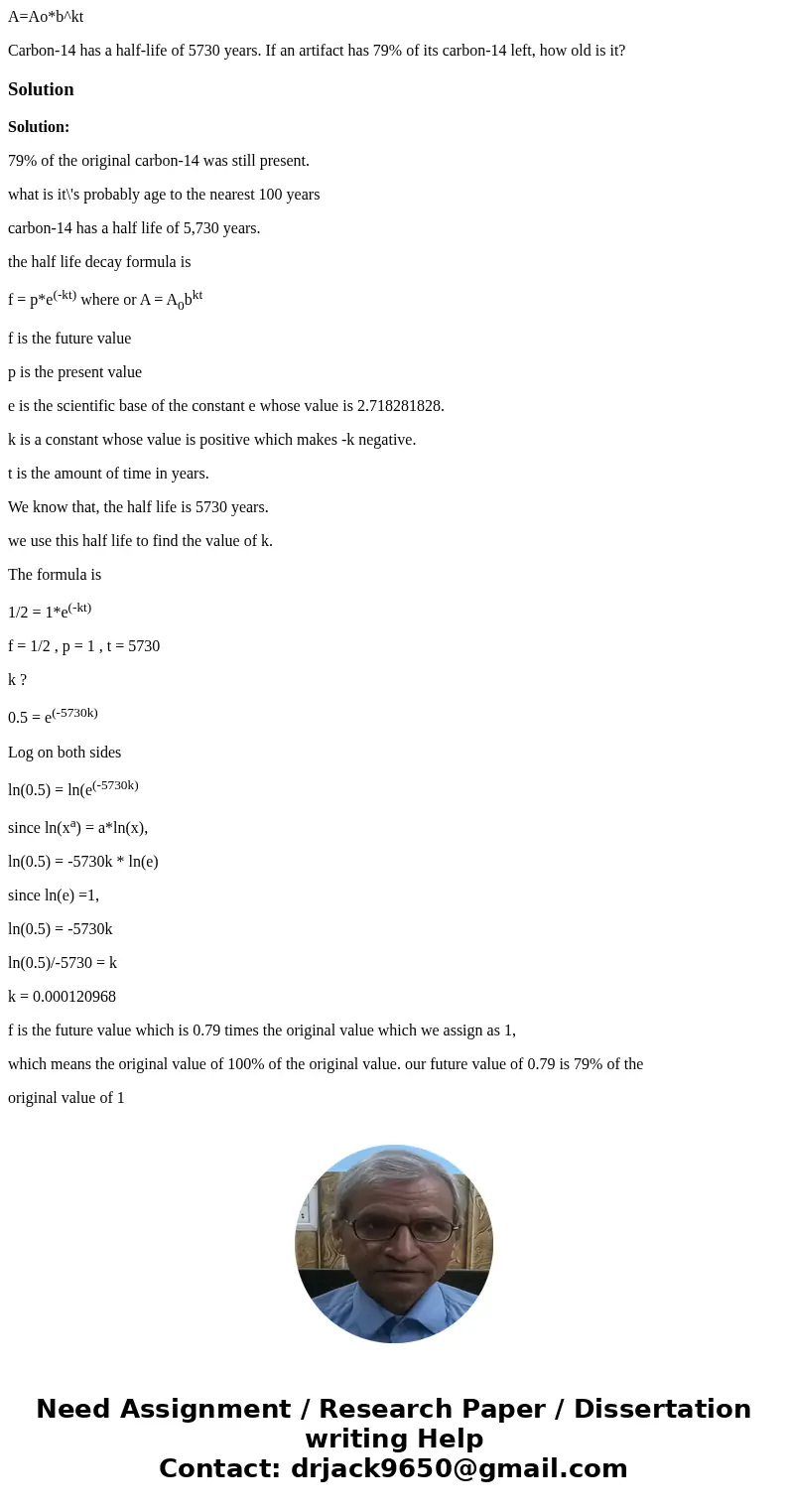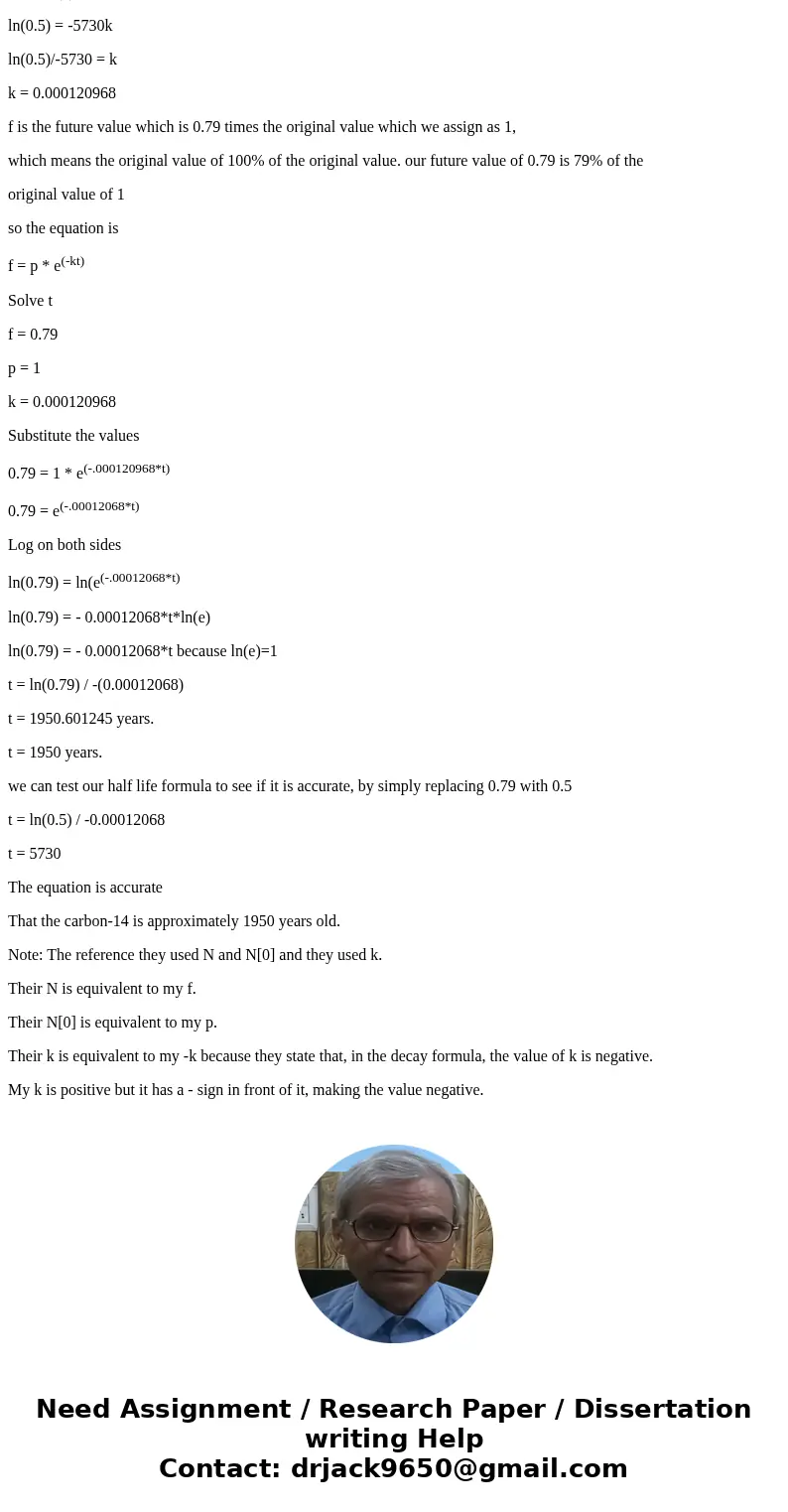AAobkt Carbon14 has a halflife of 5730 years If an artifact
A=Ao*b^kt
Carbon-14 has a half-life of 5730 years. If an artifact has 79% of its carbon-14 left, how old is it?
Solution
Solution:
79% of the original carbon-14 was still present.
what is it\'s probably age to the nearest 100 years
carbon-14 has a half life of 5,730 years.
the half life decay formula is
f = p*e(-kt) where or A = A0bkt
f is the future value
p is the present value
e is the scientific base of the constant e whose value is 2.718281828.
k is a constant whose value is positive which makes -k negative.
t is the amount of time in years.
We know that, the half life is 5730 years.
we use this half life to find the value of k.
The formula is
1/2 = 1*e(-kt)
f = 1/2 , p = 1 , t = 5730
k ?
0.5 = e(-5730k)
Log on both sides
ln(0.5) = ln(e(-5730k)
since ln(xa) = a*ln(x),
ln(0.5) = -5730k * ln(e)
since ln(e) =1,
ln(0.5) = -5730k
ln(0.5)/-5730 = k
k = 0.000120968
f is the future value which is 0.79 times the original value which we assign as 1,
which means the original value of 100% of the original value. our future value of 0.79 is 79% of the
original value of 1
so the equation is
f = p * e(-kt)
Solve t
f = 0.79
p = 1
k = 0.000120968
Substitute the values
0.79 = 1 * e(-.000120968*t)
0.79 = e(-.00012068*t)
Log on both sides
ln(0.79) = ln(e(-.00012068*t)
ln(0.79) = - 0.00012068*t*ln(e)
ln(0.79) = - 0.00012068*t because ln(e)=1
t = ln(0.79) / -(0.00012068)
t = 1950.601245 years.
t = 1950 years.
we can test our half life formula to see if it is accurate, by simply replacing 0.79 with 0.5
t = ln(0.5) / -0.00012068
t = 5730
The equation is accurate
That the carbon-14 is approximately 1950 years old.
Note: The reference they used N and N[0] and they used k.
Their N is equivalent to my f.
Their N[0] is equivalent to my p.
Their k is equivalent to my -k because they state that, in the decay formula, the value of k is negative.
My k is positive but it has a - sign in front of it, making the value negative.


 Homework Sourse
Homework Sourse